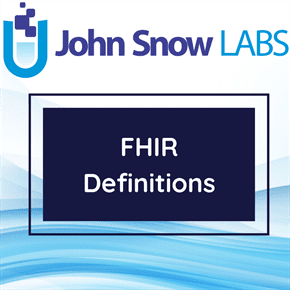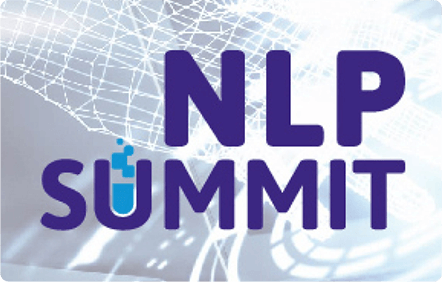Others titles
- FHIR Observation Resource
- Electronic Health Records Exchange Through FHIR
Keywords
- FHIR
- HL7
- Medical Terminology
- Processes Data
- Processes Information
- Processes Documentation
- Health Information Exchange
- Electronic Health Records
- FHIR Smart
- Smart on FHIR
Observation

Observation is the measurement and simple assertion made about a patient, device or another subject. Most observations are simple name/value pair assertions with some metadata, but some observations group other observations together logically, or even are multi-component observations.
Get The Data
- Research
Non-Commercial,
Share-Alike,
Attribution Free Forever
- Commercial
Commercial Use,
Remix & Adapt,
White Label Log in to download
Description
Observations are a central element in healthcare, used to support the diagnosis, monitor progress, determine baselines and patterns and even capture demographic characteristics. Note that the Diagnostic Report resource provides a clinical or workflow context for a set of observations and the Observation resource is referenced by Diagnostic Report to represent laboratory, imaging, and other clinical and diagnostic data to form a complete report.
Uses for the Observation resource include:
– Vital signs such as body weight, blood pressure, and temperature
– Laboratory Data like blood glucose, or an estimated Glomerular Filtration Rate (GFR)
– Imaging results like bone density or fetal measurements
– Clinical Findings such as abdominal tenderness
– Device measurements such as Electrocardiogram (EKG) data or Pulse Oximetry data
– Clinical assessment tools such as ‘Appearance, Pulse, Grimace, Activity, and Respiration (APGAR)’ or a Glasgow Coma Score
– Personal characteristics: such as eye-color
– Social histories like tobacco use, family support, or cognitive status
– Core characteristics like pregnancy status, or a death assertion
The boundaries between clinical findings and disorders remains a challenge in the medical ontology. These boundaries can be clarified by profiling Observation for a particular use case.
The Media resource captures a specific type of observation whose value is audio, video or image data. This resource is used instead of Observation to represent such forms of information as it exposes the metadata relevant for interpreting the information.
In contrast to the Observation resource, the Diagnostic Report resource typically includes additional clinical context and some mix of atomic results, images, imaging reports, textual and coded interpretation, and formatted representations. Laboratory reports, pathology reports, and imaging reports should be represented using the Diagnostic Report resource. The Observation resource is referenced by the Diagnostic Report to provide the atomic results for a particular investigation. “Laboratories routinely have a variable that is summative across a series of discrete variables – these are usually called ‘impressions’ or ‘interpretations’. Sometimes they are algorithmically specified and sometimes they have the imprimatur of pathologists and they are conveyed in Observation or Diagnostic Report instead of the Clinical Impression resource. The Observation resource should not be used to record clinical diagnosis about a patient or subject.
About this Dataset
Data Info
| Date Created | 2018-09-20 |
|---|---|
| Last Modified | 2023-03-26 |
| Version | 5.0.0 |
| Update Frequency |
Annual |
| Temporal Coverage |
N/A |
| Spatial Coverage |
United States |
| Source | John Snow Labs; Health Level Seven International; |
| Source License URL | |
| Source License Requirements |
N/A |
| Source Citation |
N/A |
| Keywords | FHIR, HL7, Medical Terminology, Processes Data, Processes Information, Processes Documentation, Health Information Exchange, Electronic Health Records, FHIR Smart, Smart on FHIR |
| Other Titles | FHIR Observation Resource, Electronic Health Records Exchange Through FHIR |
Data Fields
| Name | Description | Type | Constraints |
|---|---|---|---|
| Concept_Name | Name of the concept in the FHIR structure. | string | required : 1 |
| Computer_Ready_Name | A Computer-ready name (e.g. a token) that identifies the structure - suitable for code generation. Note that this name (and other names relevant for code generation, including element & slice names, codes etc) may collide with reserved words in the relevant target language, and code generators will need to handle this. | string | - |
| Type | The type the structure describes. | string | - |
| Dollar_Ref | The "$ref" string value contains a Uniform Resource Identifier (URI) which identifies the location of the JSON value being referenced. | string | - |
| Description | A free text natural language description of the structure and its use. | string | - |
| Items | The value of the keyword should be an object or an array of objects. If the keyword value is an object, then for the data array to be valid each item of the array should be valid according to the schema in this value. | string | - |
| Enum | The enum is used to restrict a value to a fixed set of values. It must be an array with at least one element, where each element is unique. | string | - |
| Required | The value of the keyword should be an array of unique strings. The data object to be valid should contain all properties with names equal to the elements in the keyword value. | string | - |
| Const | The value of this keyword can be anything. The data is valid if it is deeply equal to the value of the keyword. | string | - |
Data Preview
| Concept Name | Computer Ready Name | Type | Dollar Ref | Description | Items | Enum | Required | Const |
| Observation | resourceType | This is a Observation resource | Observation | |||||
| Observation | id | #/definitions/id | The logical id of the resource | |||||
| Observation | meta | #/definitions/Meta | The metadata about the resource. This is content that is maintained by the infrastructure. Changes to the content might not always be associated with version changes to the resource. | |||||
| Observation | implicitRules | #/definitions/uri | A reference to a set of rules that were followed when the resource was constructed | |||||
| Observation | _implicitRules | #/definitions/Element | Extensions for implicitRules | |||||
| Observation | language | #/definitions/code | The base language in which the resource is written. | |||||
| Observation | _language | #/definitions/Element | Extensions for language | |||||
| Observation | text | #/definitions/Narrative | A human-readable narrative that contains a summary of the resource and can be used to represent the content of the resource to a human. The narrative need not encode all the structured data | |||||
| Observation | contained | array | These resources do not have an independent existence apart from the resource that contains them - they cannot be identified independently | |||||
| Observation | extension | array | May be used to represent additional information that is not part of the basic definition of the resource. To make the use of extensions safe and managable |






















